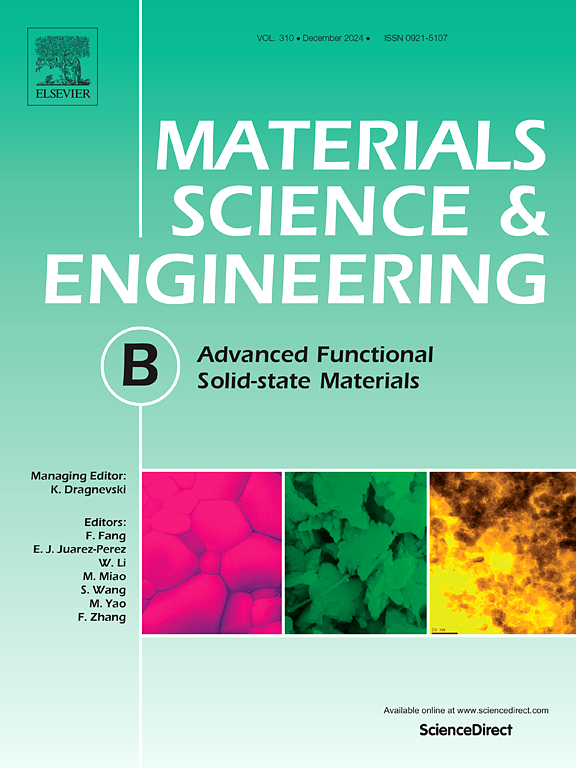Evaluation of Ni0.94Zn0.06O thin film performance and characterization for optoelectronic applications: Structural, optical, and electrical perspectives
IF 3.9
3区 材料科学
Q2 MATERIALS SCIENCE, MULTIDISCIPLINARY
引用次数: 0
Abstract
Ni0.94Zn0.06O films grown at 723 K on clean glass substrates via spray pyrolysis technique, thereafter, the deposited films were annealed at temperatures of 773, and 823 K respectively, for 1 hr. The deposited films were structurally characterized using X-ray diffraction (XRD), a field emission scanning electron microscope (FE-SEM) interfaced with energy-dispersive X-ray spectroscopy (EDAX) and a high-resolution transmission electron microscope (HRTEM),). The prepared films are found to belong to cubic structures based on X-ray data. An increase in particle size with increasing temperature was found by evaluating the variation of the particle size D, strain, ε and dislocation density, δ as a function of the annealing temperatures. The analysis of the optical transmission spectra in the 200–2500 nm wavelength range shows that the refractive index n increases with the annealing temperature, but the optical band gap Eg value decreases. Two different types of conduction mechanisms are revealed by the film resistance dependence of temperature measured between 300 and 600 K. For these types, the activation energy ΔEg values decrease as the annealing temperature increases.

求助全文
约1分钟内获得全文
求助全文
来源期刊

Materials Science and Engineering: B
工程技术-材料科学:综合
CiteScore
5.60
自引率
2.80%
发文量
481
审稿时长
3.5 months
期刊介绍:
The journal provides an international medium for the publication of theoretical and experimental studies and reviews related to the electronic, electrochemical, ionic, magnetic, optical, and biosensing properties of solid state materials in bulk, thin film and particulate forms. Papers dealing with synthesis, processing, characterization, structure, physical properties and computational aspects of nano-crystalline, crystalline, amorphous and glassy forms of ceramics, semiconductors, layered insertion compounds, low-dimensional compounds and systems, fast-ion conductors, polymers and dielectrics are viewed as suitable for publication. Articles focused on nano-structured aspects of these advanced solid-state materials will also be considered suitable.
 求助内容:
求助内容: 应助结果提醒方式:
应助结果提醒方式:


